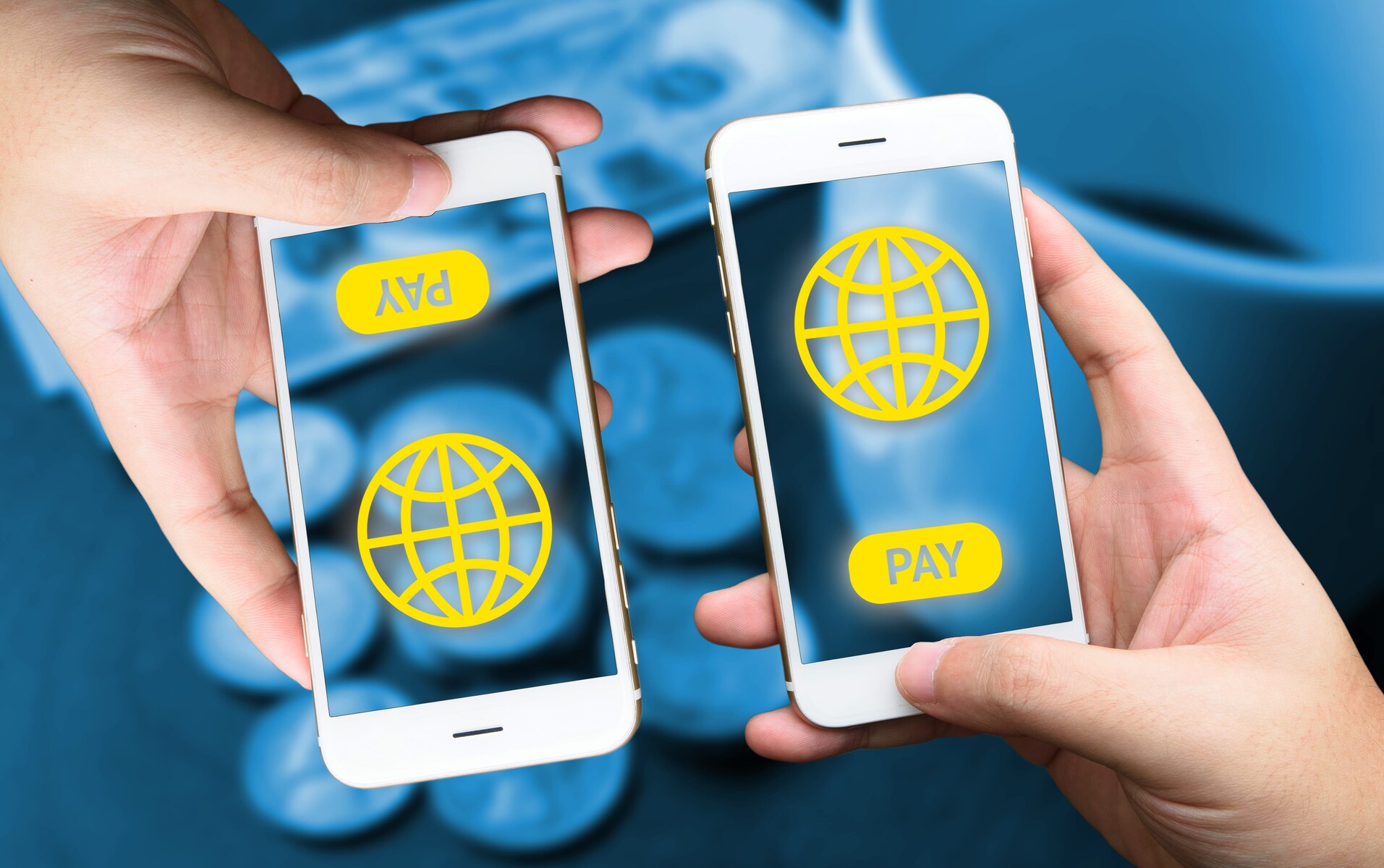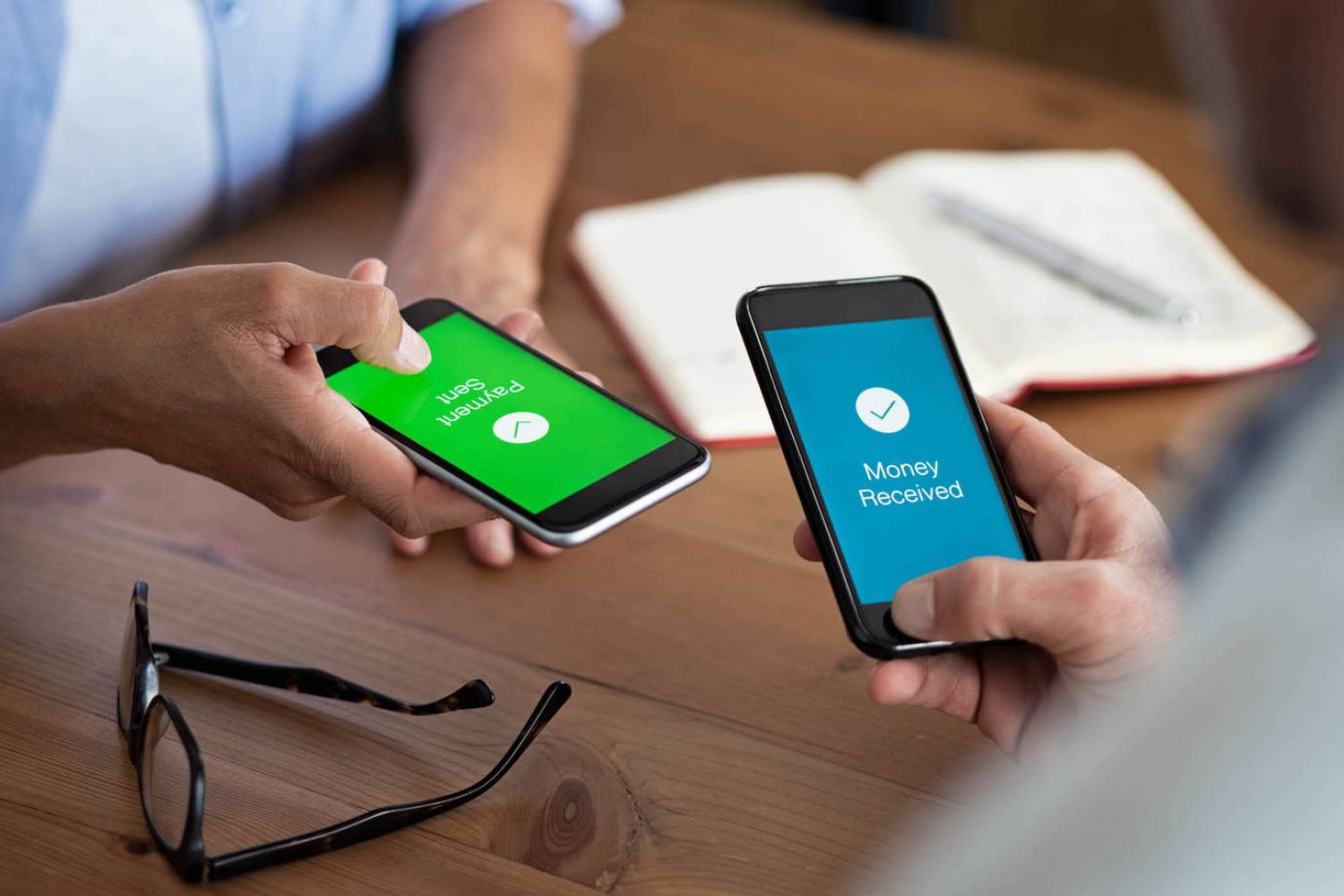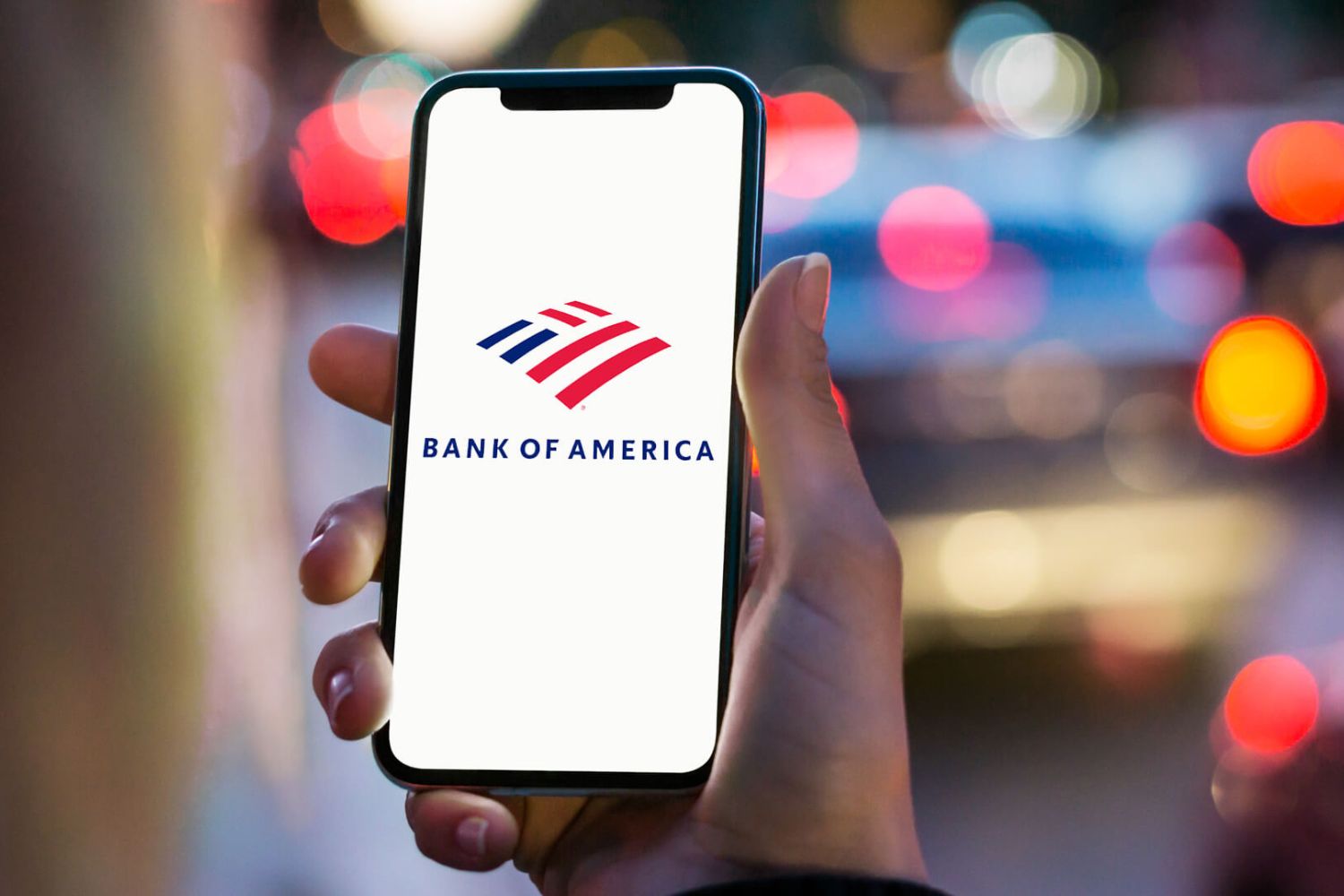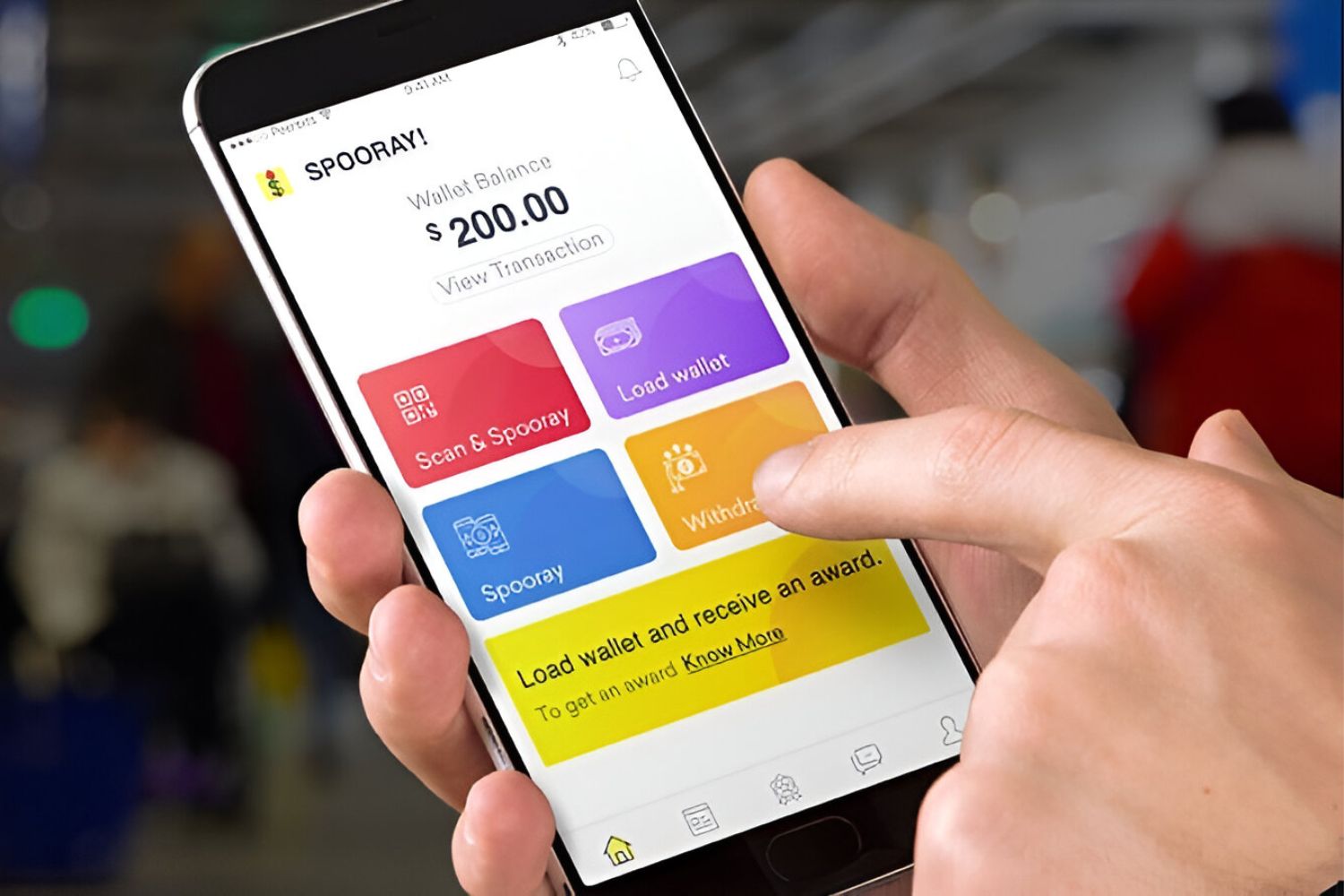Introduction
Welcome to the world of P2P money transfer! In today’s digital age, sending money to friends, family, or businesses has become easier than ever before. Gone are the days of waiting in long lines at the bank or relying on traditional money transfer methods. P2P money transfer has revolutionized the way we send and receive funds.
P2P, which stands for Peer-to-Peer, refers to a decentralized system where individuals can transfer money directly to each other without the need for intermediaries such as banks or payment processors. With P2P money transfer, you can send funds across the globe instantly, efficiently, and at lower fees compared to traditional methods.
The rise of P2P money transfer can be attributed to the advancements in technology, particularly the internet and mobile devices. With just a few taps on a smartphone or clicks on a computer, you can securely transfer money to anyone, anywhere in the world, without the hassle of physical cash or lengthy paperwork.
Whether you need to split a dinner bill with friends, pay your portion of the rent, or support a cause on a crowdfunding platform, P2P money transfer offers a convenient and flexible way to handle financial transactions.
But how does P2P money transfer actually work? What are the benefits and drawbacks? Which platforms are the most popular? In this article, we will explore the intricacies of P2P money transfer, delve into its advantages and disadvantages, and provide you with some handy tips to ensure safe and secure transactions.
So, if you’re ready to embark on a journey through the world of P2P money transfer, let’s dive in and discover the exciting possibilities that await!
Definition of P2P Money Transfer
P2P money transfer, also known as peer-to-peer money transfer or person-to-person money transfer, is a method of transferring funds between individuals without the involvement of traditional financial institutions. This innovative system allows users to send and receive money directly to and from their peers, bypassing the need for intermediaries such as banks or payment processors.
Unlike traditional money transfer methods, P2P money transfer leverages digital platforms and online networks to facilitate transactions. Individuals can initiate transfers using their smartphones, computers, or other internet-enabled devices, making the process quick, convenient, and accessible anytime, anywhere.
One of the key features of P2P money transfer is its decentralized nature. Instead of relying on a centralized authority to process and verify transactions, P2P platforms utilize peer-to-peer networks and encryption technologies to ensure the security and integrity of the transferred funds.
While P2P money transfer was initially popularized as a way to send money to friends and family, it has evolved to encompass a wide range of financial activities. Nowadays, users can use P2P platforms for various purposes, such as splitting bills, reimbursing friends for expenses, making online purchases, and even supporting charitable causes through crowdfunding.
It’s important to note that P2P money transfer is not limited to domestic transfers. Thanks to the global reach of the internet, individuals can easily send money internationally using P2P platforms. This has greatly simplified the process of remittance for those who need to send money back to their home countries or support loved ones abroad.
Overall, P2P money transfer offers a convenient, cost-effective, and secure alternative to traditional banking methods. It allows individuals to take control of their financial transactions, eliminating the need for intermediaries and providing greater transparency and flexibility in managing their money.
In the next section, we will explore how P2P money transfer actually works and the technologies behind its success.
How Does P2P Money Transfer Work?
Curious about the inner workings of P2P money transfer? Let’s take a closer look at the process and technologies involved.
1. Registration and Verification: To start using a P2P money transfer platform, you will need to sign up and create an account. This typically involves providing personal information and verifying your identity to ensure security and compliance with anti-money laundering regulations. Depending on the platform, the verification process may require documentation such as a government-issued ID or proof of address.
2. Funding Your Account: Before you can initiate a transfer, you’ll need to add funds to your P2P money transfer account. This can be done by linking a bank account, credit card, or debit card to your profile. Some platforms may also offer the option to fund your account through alternative methods like cryptocurrency or prepaid vouchers.
3. Initiating a Transfer: Once your account is funded, you can start the transfer process. You’ll need to provide the recipient’s details, such as their email address, username, or mobile number, depending on the platform. It’s important to double-check the information to ensure accuracy and avoid any delays or errors in the transfer.
4. Confirmation and Notification: Once you initiate a transfer, the P2P money transfer platform will confirm the transaction details and deduct the specified amount from your account. The recipient will be notified of the incoming funds through email, SMS, or a notification within the platform. Some platforms also allow users to include personalized messages or memos with the transfer to provide additional context or instructions.
5. Receiving the Funds: The recipient will receive a notification regarding the incoming funds and can then access the money through their own P2P money transfer account. Depending on the platform, funds may be instantly available for use or may require an additional step, such as withdrawing the funds to a linked bank account.
6. Security and Encryption: P2P money transfer platforms prioritize the security and privacy of their users’ financial information. They utilize encryption technologies, secure socket layers (SSL), and other advanced security measures to protect data transmission and maintain the integrity of transactions.
7. Fees and Exchange Rates: It’s important to be aware that P2P money transfer platforms may charge fees for their services. These fees can vary depending on factors such as the transfer amount, destination country, and currency conversion. Additionally, exchange rates may also apply for international transfers, which can impact the final amount received by the recipient.
Now that you have a better understanding of how P2P money transfer works, let’s explore some of the advantages and disadvantages associated with this method of transferring funds.
Pros and Cons of P2P Money Transfer
P2P money transfer offers numerous benefits that have contributed to its growing popularity as a preferred method of transferring funds. However, it’s important to consider the drawbacks as well. Let’s explore the pros and cons of P2P money transfer.
Pros:
- Convenience: P2P money transfer allows for quick and easy transactions, eliminating the need for physical cash or checks. With just a few taps on a smartphone or clicks on a computer, you can send and receive money at your convenience, from anywhere with an internet connection.
- Lower Fees: Compared to traditional money transfer methods, P2P money transfer often incurs lower fees. This can result in cost savings, especially for frequent senders or those making international transfers, where traditional methods may charge high fees and offer less favorable exchange rates.
- Speed: P2P money transfer is typically faster than traditional methods, which may involve waiting for checks to clear or for funds to be processed through intermediary banks. With P2P platforms, funds can be transferred instantly or within minutes, providing quick access to the recipient.
- Flexibility: P2P money transfer offers flexibility in terms of the transfer amount. Whether you need to send small amounts for everyday expenses or larger sums for significant transactions, P2P platforms can accommodate a wide range of transfer sizes.
- Accessibility: P2P money transfer can be accessed by anyone with an internet connection and a compatible device. This makes it particularly convenient for individuals who may not have access to traditional banking services or prefer the convenience of digital transactions.
Cons:
- Security Risks: While P2P money transfer platforms implement security measures, there is always a risk of fraudulent activity or unauthorized access. Users need to be cautious and ensure they are using reputable platforms with robust security features.
- Technical Issues: Like any digital service, P2P money transfer platforms can experience technical glitches or downtime, which may disrupt transactions. It’s important to be aware of the platform’s reliability and have backup options available in case of any issues.
- Limited Recipient Options: P2P money transfer relies on both the sender and recipient having accounts with the same platform or being part of the same ecosystem. This may limit the options for recipients who are not already registered on the platform.
- Exchange Rate Variations: For international transfers involving currency conversion, P2P money transfer platforms may offer their own exchange rates, which can differ from market rates. This can impact the final amount received by the recipient.
- Lack of Consumer Protection: Unlike bank transfers or credit card payments, P2P money transfer may not provide the same level of consumer protection in case of fraud or disputes. It’s essential to read and understand the platform’s terms and conditions regarding liability and dispute resolution.
Now that we’ve explored the pros and cons of P2P money transfer, let’s take a look at some popular P2P money transfer services available today.
Popular P2P Money Transfer Services
As the demand for P2P money transfer grows, several platforms have emerged to cater to this need. Here are some of the popular P2P money transfer services available today:
1. PayPal
PayPal is one of the most recognized and widely used P2P money transfer services. It allows users to send and receive money from their PayPal accounts, making it convenient for both personal and business transactions. PayPal offers features like buyer and seller protection, secure encryption, and seamless integration with online shopping platforms. It is accepted by a large number of merchants globally.
2. Venmo
Venmo is a P2P money transfer service owned by PayPal. It is known for its social payment features, as users can share payments and transaction details with friends and contacts on the app’s feed. Venmo offers a user-friendly interface and allows for instant transfers to linked bank accounts. It also provides options to split bills, request money from others, and make payments at select merchants.
3. Zelle
Zelle is a P2P money transfer service offered by major banks in the United States. It allows users to send money directly from their bank accounts to recipients using their email address or mobile phone number. Zelle offers fast and secure transfers, often within minutes, and is widely supported by many banks and credit unions in the US.
4. Cash App
Cash App, developed by Square Inc., is a popular P2P money transfer service that enables users to send and receive money instantly. It offers a range of additional features, such as the ability to invest in stocks and buy Bitcoin, making it a multi-functional financial app. Cash App also provides a free Visa debit card linked to the user’s account, allowing for easy access to funds.
5. Google Pay
Google Pay, a part of the Google ecosystem, allows users to send money securely using their mobile phones. It integrates with other Google services, making it easy to send money through Gmail or directly via the Google Pay app. Google Pay also offers the option to make payments in physical stores and online merchants that accept Google Pay.
These are just a few examples of popular P2P money transfer services. It’s important to research and compare the features, fees, and availability of these platforms to choose the one that best suits your needs.
Next, we’ll explore some essential tips for using P2P money transfer safely and securely.
Tips for Using P2P Money Transfer Safely
P2P money transfer offers convenience and flexibility, but it’s important to prioritize safety and security when using these services. Here are some essential tips to ensure a safe P2P money transfer experience:
1. Choose a reputable platform: Select a well-established and trusted P2P money transfer platform that has a good track record of security and customer satisfaction. Research the platform’s reputation, read reviews, and consider recommendations from reliable sources before signing up.
2. Verify recipient details: Double-check the recipient’s information before initiating a transfer. Ensure that the email address, username, or mobile number is correct to prevent sending money to the wrong person. Pay attention to any prompts or verification steps provided by the platform to confirm the recipient’s identity.
3. Use strong passwords and enable two-factor authentication: Protect your P2P money transfer account by using strong, unique passwords and enabling two-factor authentication (2FA) if the platform offers it. 2FA adds an extra layer of security by requiring a verification code in addition to your password when logging in.
4. Be cautious of phishing scams: Be wary of emails, text messages, or other communications that request your account information, passwords, or personal details. Legitimate P2P money transfer services will never ask for this information through unsolicited messages. Always access your account directly through the official platform’s website or app.
5. Keep your devices and software updated: Regularly update your devices, operating systems, and P2P money transfer apps to ensure you have the latest security patches and bug fixes. Outdated software may have vulnerabilities that can be exploited by cybercriminals.
6. Monitor your transactions: Keep a close eye on your P2P money transfer account for any unauthorized transactions. Report any suspicious activities or discrepancies to the platform’s customer support immediately.
7. Avoid sharing sensitive information publicly: Refrain from sharing sensitive account details or transaction information on public forums or social media platforms. This information can be used by scammers to target you or gain unauthorized access to your account.
8. Educate yourself about fraud prevention: Stay informed about common scams and fraud tactics in the P2P money transfer space. Familiarize yourself with the platform’s fraud prevention guidelines and use their recommended security practices to protect your account and transactions.
9. Keep communication within the platform: If you need to communicate with the recipient regarding the transfer, use the messaging or chat features provided within the P2P money transfer platform. Avoid sharing personal or financial information through external communication channels.
10. Report any issues promptly: If you encounter any problems or suspect fraudulent activity, report it to the platform’s customer support immediately. They can investigate the issue, provide guidance, and take appropriate action to protect your account.
By following these tips, you can enhance the security of your P2P money transfer transactions and enjoy a worry-free experience.
Next, let’s dive into the future of P2P money transfer and explore the potential developments in this field.
The Future of P2P Money Transfer
P2P money transfer has already made significant strides in revolutionizing the way we send and receive funds. However, the future holds even more exciting possibilities for this innovative payment method.
1. Blockchain and Cryptocurrencies: Blockchain technology and cryptocurrencies have the potential to reshape the landscape of P2P money transfer. With decentralized and secure transactions, cryptocurrencies like Bitcoin can offer faster and cheaper cross-border transfers, eliminating the need for traditional intermediaries.
2. Enhanced Security Measures: As P2P money transfer continues to grow, platforms will prioritize improving their security features. This may include incorporating advanced encryption techniques, biometric authentication methods, and artificial intelligence-driven fraud detection systems to safeguard user accounts and transactions.
3. Integration with IoT Devices: The Internet of Things (IoT) is increasingly connecting devices in our daily lives. P2P money transfer could seamlessly integrate with IoT devices, allowing users to initiate transfers through smart home assistants, wearables, and even connected cars, further enhancing convenience and accessibility.
4. Seamless Cross-Border Transfers: P2P money transfer is already simplifying international transactions. In the future, we can anticipate even smoother cross-border transfers, with reduced fees, faster processing times, and improved currency conversion capabilities. This will make it easier for businesses and individuals to engage in global commerce.
5. Integration with Social Media and E-commerce platforms: P2P money transfer may become seamlessly integrated with popular social media platforms and e-commerce websites. This would enable users to send money to friends, make purchases, and complete transactions without leaving their favorite social or shopping apps.
6. Enhanced Mobile Wallets: Mobile wallets, which are already widely used for P2P money transfer, will see further advancements. These wallets may incorporate additional features like budgeting tools, financial management dashboards, and loyalty rewards programs, creating an all-in-one financial solution for users.
7. Improved Transfer Speed and Efficiency: P2P money transfer platforms will continue to focus on streamlining the transfer process to improve speed and efficiency. Real-time transfers, instant settlement, and faster fund availability for recipients will become the norm, eliminating any delays or barriers.
8. Collaboration between P2P Platforms and Banking Institutions: We can expect to see increased collaboration between P2P money transfer platforms and traditional banking institutions. This synergy will enhance the level of services offered, promote interoperability between different financial systems, and provide users with more options for moving their money.
9. More Transparent and Traceable Transactions: P2P money transfer platforms will prioritize transparency and traceability, leveraging technologies like blockchain to provide users with a clear audit trail of their transactions. Users will have increased confidence in the security and legitimacy of the transfers they make.
10. Expansion into Developing Markets: P2P money transfer services will continue to expand their reach into emerging markets where access to traditional banking services is limited. This will provide financial inclusion to a larger population, empowering individuals and businesses in these regions.
As P2P money transfer continues to evolve, it promises to redefine the way we handle financial transactions, making them faster, more convenient, and accessible to all. With advancements in technology and the increasing demand for seamless digital payments, the future of P2P money transfer looks incredibly promising.
Now that we’ve explored the future possibilities, let’s wrap up our discussion on P2P money transfer.
Conclusion
P2P money transfer has revolutionized the way we send and receive funds, providing a convenient, cost-effective, and secure alternative to traditional banking methods. With just a few taps on a smartphone or clicks on a computer, individuals can transfer money directly to each other without the need for intermediaries.
Throughout this article, we’ve explored the definition of P2P money transfer and how it works, highlighting its benefits such as convenience, lower fees, and speed. We’ve also discussed the popular P2P money transfer services available today, including PayPal, Venmo, Zelle, Cash App, and Google Pay.
To ensure a safe and secure P2P money transfer experience, we provided valuable tips, such as choosing reputable platforms, verifying recipient details, using strong passwords and two-factor authentication, and being cautious of phishing scams.
We also looked into the future of P2P money transfer, where advancements in blockchain technology, enhanced security measures, integration with IoT devices, seamless cross-border transfers, and collaboration between platforms and banking institutions are expected.
P2P money transfer is reshaping the way we handle financial transactions, empowering individuals, businesses, and even charitable causes to transact easily and efficiently. With continued technological advancements and the growing demand for seamless digital payments, the future of P2P money transfer holds immense potential.
As you navigate the world of P2P money transfer, remember to prioritize safety and security, choose reputable platforms, and stay informed about the latest industry developments. Enjoy the convenience and flexibility that P2P money transfer offers, knowing that your funds can be transferred quickly and securely to your desired recipients.
So, whether you’re splitting a bill with friends, paying your share of the rent, or supporting a cause on a crowdfunding platform, embrace the possibilities of P2P money transfer and experience a new level of financial convenience.

























